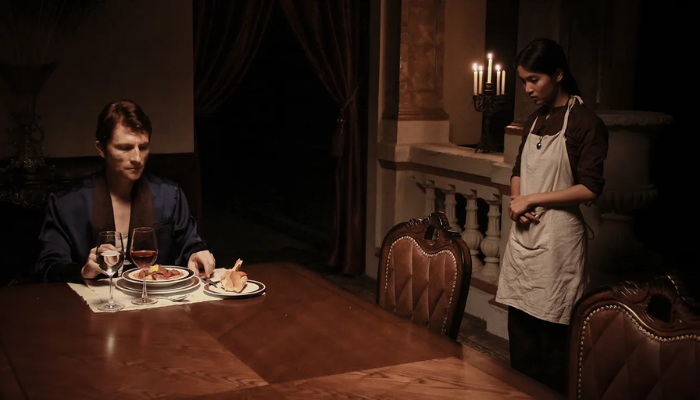The housemaid movie isn’t just another thriller—it’s a masterclass in suspense, sensuality, and psychological manipulation. Whether you’re referring to the classic 1960s South Korean film or its 2010 remake, this title has gained global acclaim for its daring themes and chilling narrative. With its layered characters, social critique, and shocking twists, the housemaid movie has become a staple in international cinema studies and a hot topic among thriller enthusiasts.
If you’re searching for a film that blends haunting atmosphere with intricate human dynamics, the housemaid movie delivers on every front. In this article, we’ll explore the origin, storyline, characters, critical acclaim, and lasting legacy of this cinematic gem. Buckle up, because this is more than just a movie—it’s an experience that claws into your psyche and lingers long after the credits roll.
The Origins of the Housemaid Movie: A Tale of Two Versions
The housemaid movie originally debuted in 1960, directed by South Korean auteur Kim Ki-young. Titled Hanyo in Korean, the film centers on a domestic worker who becomes entangled in the life of a middle-class family, leading to devastating consequences. A landmark in Korean cinema, it was bold in its critique of gender roles, power dynamics, and societal expectations in post-war Korea.
Fast forward to 2010, director Im Sang-soo revived the narrative in a modern setting. The remake retained the original’s psychological depth while updating its setting to a luxurious mansion and a wealthy contemporary family. This version amplified themes of class division, female exploitation, and moral decay in a way that resonated with modern audiences. Both films, though decades apart, share a DNA of danger, desire, and disturbing consequences, making the housemaid movie a potent symbol of cinematic evolution.
Plot Breakdown: A Story of Seduction and Suspense
At its core, the housemaid movie tells the story of a young woman employed as a housemaid who becomes romantically and sexually involved with the master of the house. As tensions mount within the household, jealousy, manipulation, and betrayal spiral into a psychological battlefield. The maid, initially a passive observer, gradually becomes a central agent of chaos.
In the 2010 version, the narrative expands with stunning cinematography and a more nuanced take on power and privilege. The housemaid’s relationship with the family unravels complex intersections of gender, class, and emotion. Her descent into vengeance and despair is chillingly portrayed, making viewers question who the real antagonist is. This intricately woven plot has earned the housemaid movie a spot among the most gripping thrillers in global cinema.
Characters and Performances: An Intense Psychological Dance
One of the strongest aspects of the housemaid movie is its cast of deeply flawed yet unforgettable characters. In both versions, the titular housemaid is not merely a victim or a villain; she’s a complex individual with motivations rooted in emotional trauma, desperation, and a longing for control. The male lead, typically portrayed as the patriarch of the house, represents moral hypocrisy and the corrupting influence of power.
The supporting characters—especially the wife and children—add layers of tension. The wife often embodies societal expectations of quiet endurance, even as her world unravels. The performances, especially in the 2010 version starring Jeon Do-yeon and Lee Jung-jae, have been widely praised for their emotional authenticity and intensity. Their chemistry fuels the film’s unsettling atmosphere, further cementing the housemaid movie as a psychological tour de force.
Themes and Symbolism: Class, Power, and Control
The housemaid movie is more than just a story—it’s a mirror reflecting society’s darkest corners. One of its most striking themes is the rigid class divide. The housemaid, often portrayed as an outsider, is never fully accepted into the family’s world, no matter how intimate her involvement. Her lower social status constantly defines her, limiting her power and shaping her downfall.
Sexual politics and gender roles also form a major undercurrent in both versions. The exploitation of the housemaid and the emotional coldness of the elite family expose a chilling reality of systemic abuse. Symbolism runs rampant throughout the film, from the architecture of the house (a literal representation of hierarchy) to visual motifs like broken glass and fire—representing shattering illusions and destruction. These layers of meaning elevate the housemaid movie from thriller to art house cinema.
Critical Reception and Cultural Impact
Upon its release in 1960, the original Housemaid shocked Korean audiences with its unfiltered portrayal of female sexuality and moral ambiguity. It was considered ahead of its time, both in narrative complexity and cinematic technique. In 1996, it was ranked among the top three Korean films of all time by a panel of critics and scholars, highlighting its lasting impact.
The 2010 remake premiered at the Cannes Film Festival and received a mixed but largely intrigued response. Critics praised its visual style, provocative themes, and strong performances, though some felt it lacked the raw intensity of the original. Regardless, both versions of the housemaid movie continue to be discussed in film schools, feminist theory circles, and cinephile communities around the world. It remains a testament to cinema’s power to disturb, provoke, and question the status quo.
Conclusion: Why the Housemaid Movie Remains Unforgettable
Whether you’re watching the 1960 original or its 2010 reimagining, the housemaid movie leaves an indelible mark. It’s a psychological thriller that doesn’t just shock—it makes you think. With its provocative themes, masterful storytelling, and unforgettable characters, the film transcends its genre and becomes a lens through which we examine society, morality, and human behavior.
As both a cultural artifact and a timeless thriller, the housemaid movie has proven its relevance across generations. It challenges norms, evokes empathy, and delivers an emotional punch that few films can match. If you haven’t experienced this cinematic gem yet, prepare to be captivated—and deeply unsettled.
FAQs About the Housemaid Movie
1. What is the housemaid movie about?
The housemaid movie revolves around a domestic worker who becomes entangled in the life of an upper-class family, leading to a web of seduction, betrayal, and tragedy.
2. Who directed the original housemaid movie?
The 1960 version was directed by Kim Ki-young, a pioneer of Korean psychological thrillers.
3. Is the 2010 housemaid movie a remake?
Yes, the 2010 film by Im Sang-soo is a modern reimagining of the 1960 original, updated for contemporary audiences.
4. Where can I watch the housemaid movie?
Both versions are available on major streaming platforms, including Criterion Channel, Amazon Prime, and various international film libraries.
5. Is the housemaid movie based on a true story?
No, it is a fictional narrative, though its themes are rooted in real societal issues.
6. What genre is the housemaid movie?
It’s a psychological thriller with strong elements of drama, eroticism, and social critique.
7. What makes the housemaid movie unique?
Its blend of suspense, rich symbolism, and critique of social hierarchies sets it apart from other thrillers.
8. Is the movie appropriate for all audiences?
Due to adult themes, sexual content, and intense psychological elements, it is best suited for mature viewers.
9. How does the housemaid movie explore gender roles?
The film critiques traditional gender dynamics by showing how women are both victimized and empowered within patriarchal structures.
10. Why is the housemaid movie considered a classic?
Its bold narrative, groundbreaking direction, and enduring relevance have earned it a spot among the most influential films in global cinema.



